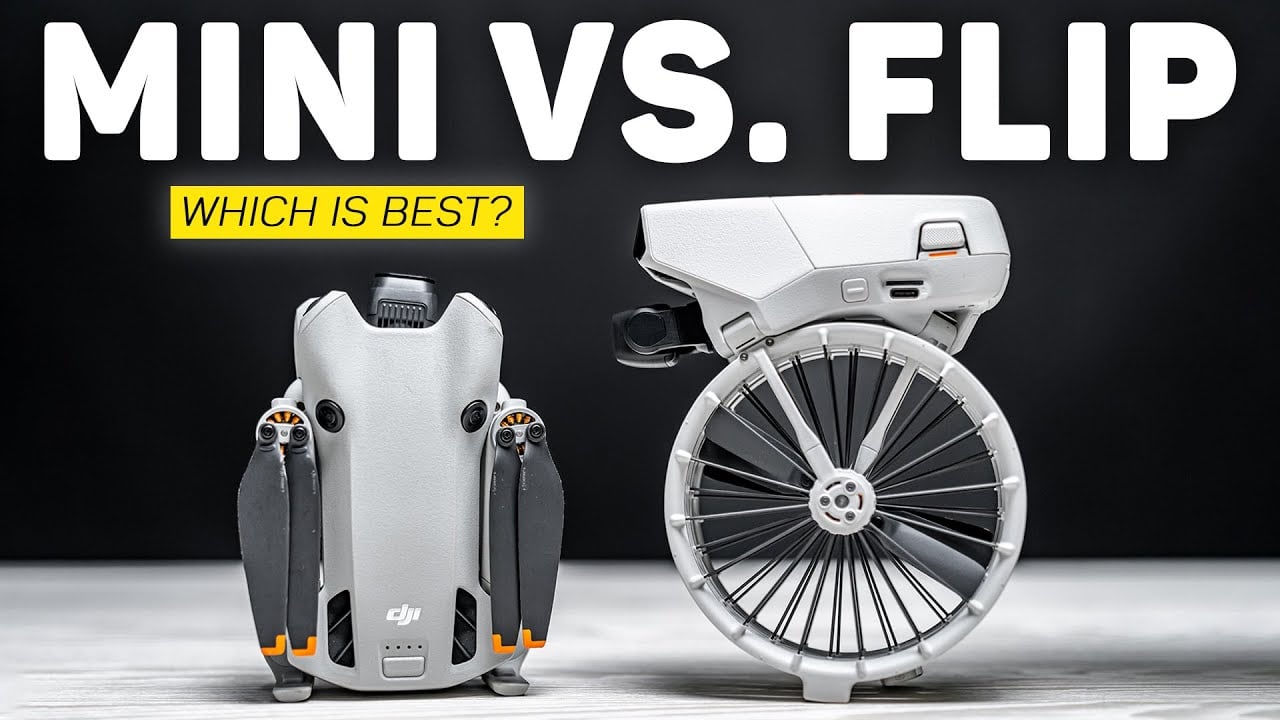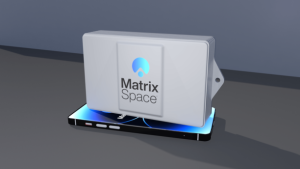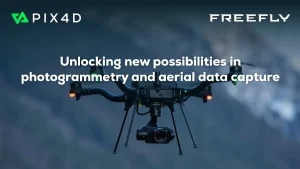DJI Flip vs. DJI Mini 4 Pro: Discover the Similarities
In this detailed analysis, we take a closer look at two very similar drones: the DJI Mini 4 Pro and the DJI Flip. The Flip can be considered a specialized version of the Mini 4 Pro, boasting nearly identical features and specifications with a few notable exceptions. Let’s explore the similarities, differences, and overall performance of these lightweight sub-250g drones.
Similarities Overview
Both the Mini 4 Pro and the Flip weigh under 250 grams, including the Flip’s built-in propeller guards, making them compliant with regulations in various countries for easier flying. When deployed for flight, both drones maintain identical dimensions, and during travel, they utilize the same transmission systems for reliable signal strength at both close and extended ranges.

Both models are compatible with the same remote controllers—the RC-N3 and the RC2, which features an integrated display. Additionally, key flight parameters such as speed are identical, even with the Flip’s propeller guards that typically might reduce performance. Their camera systems are also very alike, delivering equivalent resolutions, frame rates, and shooting options.

However, a significant distinction is that the Mini 4 Pro’s hardware enables the camera to tilt vertically, allowing it to capture portrait-oriented images and videos without requiring a digital crop.
Pricing and Package Options
Price is among the most remarkable differences between these two drones. The base price of the Flip is lower but does not come with a remote controller. Without one, users are limited to automated flight functions or using their smartphones for control. When comparing packages including remote controls, the Flip is roughly $300 less expensive than the Mini 4 Pro. This price gap allows consumers to either save money or invest it in additional batteries and accessories.

Safety and Flight Features
Built-in Propeller Guards
A significant advantage of the Flip is its integrated propeller cages, enhancing safety when flying near people and providing protection during minor collisions. This feature makes the Flip a highly appealing choice for novices and children learning to fly drones.

These cages are compact, neatly folding for travel and exerting minimal impact on drone performance. Despite their presence, the Flip is capable of reaching maximum speeds in both regular and sport modes, making it an excellent option for high-action video shooting.
Automated Flight Modes
The Flip also boasts advanced automated flight capabilities. It can initiate flight directly from your hand without needing a remote controller by using a designated button located on its side. This button enables different flight modes, such as quick shots and follow functions, with mode selections indicated on a front-display screen beneath the infrared sensor for easy visibility.

Obstacle Avoidance and Camera Features
Advanced Obstacle Avoidance on the Mini 4 Pro
Despite the Flip’s advantages, the Mini 4 Pro includes two standout features deserving of recognition. Firstly, it is outfitted with omnidirectional obstacle avoidance sensors capable of detecting barriers from all directions—front, sides, above, and below. This comprehensive system enables the Mini 4 Pro to avoid potential crashes effectively.

The Flip, on the other hand, comes equipped with a solitary forward-facing infrared sensor, which offers basic obstacle detection but lacks the ability to sense hazards approaching from the sides or rear. In such scenarios, the Flip relies on its propeller guards for protection rather than active avoidance.
Camera Flexibility
The second notable advantage of the Mini 4 Pro is its impressive gimbal design, which allows the camera to rotate vertically for true portrait-mode shooting—ideal for creators on social media platforms like Instagram and TikTok. While both drones provide excellent photo and video quality, the choice to capture vertical content without digital cropping can significantly enhance the workflow for content creators.

Battery Life and Real-World Flight Time
Flight duration is essential for any drone, and this is where the differences are stark. The Flip claims to have a 31-minute flight time, which is substantial for a small drone with extra propeller cages. However, under practical conditions, the Flip usually achieves only between 20 to 22 minutes of flying, likely due to the added drag caused by the propeller guards.

The Mini 4 Pro offers a standard battery option to keep the device under the 250g weight limit and a Plus battery option that exceeds this restriction. It should be noted that comparing the Mini 4 Pro’s Plus battery with the Flip’s solitary battery isn’t entirely accurate. However, even when using the smaller battery, the Mini 4 Pro generally outperforms the Flip regarding flight duration, making it vital for users who prioritize extended flying times.
Performance and Handling
On paper, both drones share similar speed and wind resistance specifications. However, actual performance can diverge due to design disparities. The Mini 4 Pro, without the extra drag from propeller cages, performs slightly better in windy conditions and provides a more agile experience. Conversely, the Flip’s propeller cages serve as buffers, potentially diminishing performance by allowing for increased wind resistance.

Final Thoughts and Recommendations
In conclusion, both the Mini 4 Pro and the Flip are strikingly similar in numerous aspects yet cater to distinct needs:
- The Flip is perfect for beginners, children, or those who prioritize safety and automated flying features. Its built-in propeller guards enhance safety when flying close to people and its automated launch/landing functions offer a secure experience, all joined with an appealing lower price point for novices.
- The Mini 4 Pro is tailored for more seasoned drone users who prefer manual control and demand advanced options. Its omnidirectional obstacle avoidance system and rotatable gimbal for genuine portrait shooting deliver a more high-tech flying experience. Although priced higher, these improvements render it the top choice for those looking for optimal performance and adaptability.
Personally, I would select the DJI Mini 4 Pro. I appreciate flying manually and value the advanced capabilities and flexibility it provides, especially the enhanced obstacle avoidance and superior gimbal features. Nevertheless, if safety is your paramount concern or if you are new to flying drones, the DJI Flip may be the better fit for you.
Which drone suits you best: the Mini 4 Pro or the Flip? Share your thoughts in the comments section below. Thank you for reading, and as always, happy flying!













